Food
Soup For the Soul: The Best Soups Around The World
introWe all crave the comfort that comes from a bowl of steaming hot soup – wherever we happen to be. And while you can order a tomato or chicken soup pretty much everywhere, some soups belong to a certain city or region: hyperlocal soups, if you will. We select the most interesting and authentic ones across the globe.
0/14
Food
Soup For the Soul: The Best Soups Around The World.
AcquacottaAcquacotta – Maremma, Italy
Literally translating as ‘cooked water’, acquacotta (thankfully) is a little more than just that. Originating in Maremma, the rough coastal area of Southern Tuscany that stretches into Lazio, it was the sustenance of the shepherds and butteri, the ‘cowboys’ of this region. Whatever was available was added: vegetables, stale bread, olive oil, salt. This simple peasant dish still features on the menus of many a traditional trattoria in the area, sometimes with the daring addition of mushrooms or poached eggs.1/14
Food
Soup For the Soul: The Best Soups Around The World.
BouillabaisseBouillabaisse – Marseille, France
Despite creative interpretations (or deviations, depending on whom you ask), a traditional Provençal Bouillabaisse means a thick fish soup served as a first course, with toast spread with garlicky rouille on top, then various rockfish and shellfish along with boiled potatoes after it. Thought to have been invented by Marseillean fisherman who used the less expensive, bony fish for a simple meal after they returned to port, the soup grew out into a more refined local pride. Lots of touristy restaurants in Marseille serve up something that bears little resemblance to the original version, but if you’re prepared to dig deep, the chic Chez Michel has been serving up the real thing since 1946.2/14
Food
Soup For the Soul: The Best Soups Around The World.
Cock-a-leekieCock-a-Leekie – Scotland, UK
Cock-a-leekie is a peppered chicken soup with leeks and prunes. Prunes? Yes, these dried fruits give ‘Scotland’s National Soup’ (which actually came to Scotland via France) a nice hint of fruitiness and depth of flavour. Just the thing to warm the body and soul on a gloomy Scottish day, try the earthy soup on your next visit to Edinburgh – at the soup-specialised Union of Genius, or the sustainable Scottish Restaurant located in the Scottish National Gallery.3/14
Food
Soup For the Soul: The Best Soups Around The World.
LocroLocro de Papa – Quito, Ecuador
Locro de papa is a popular potato soup everywhere along the Andes mountains, but Ecuadorians go particularly loco over locro. Perfect when the weather gets chilly, it’s made from the starchy papa chola potato, cooked with onion, garlic, cumin, achiote (annatto) powder and milk, and usually served with toasted corn, avocado and cheese to stir in. Visiting the capital? Stop over at Yaravi restaurant to sample a satisfying locro quiteño after visiting the Mitad del Mundo monument, or try it at any other restaurant serving comida típica.4/14
Food
Soup For the Soul: The Best Soups Around The World.
Clam ChowderNew England Clam Chowder – Boston, US
In Boston it’s thick and creamy, in Rhode Island it’s clear and thin, and in Manhattan it’s chunky and tomato-based. We’re talking, of course, about clam chowder. The contender for best-known, most ancient and most comforting is the one from Boston, traditionally served with oyster crackers. If you crave this pick-me-up, served in a sourdough bread bowl, Atlantic Fish Co. (around since 1978) in Boston’s Back Bay is the place to go.5/14
Food
Soup For the Soul: The Best Soups Around The World.
LaksaPenang Laksa – Penang, Malaysia
The Peranakans were descendants of Chinese immigrants who settled in Malaysia, Singapore and Indonesia, bringing their staple dish laksa with them – and giving rise to multiple local variations of this spicy noodle soup. Penang Laksa is an asam laksa (tamarind-based) with the addition of thick rice noodles, shredded mackerel, lemongrass, galangal and chili. At Air Itam Laksa, they’ve been cooking up a potent version for over 60 years.6/14
Food
Soup For the Soul: The Best Soups Around The World.
She-Crab SoupShe-Crab Soup – Charleston, US
This emblematic soup is what you eat when you’re on the South Carolina coast, or ‘Lowcountry’ – whether you’re a native or a tourist. It’s a bisque-like soup of fresh crabmeat, crab roe, heavy cream and a dash of dry sherry added at the table. It’s a ‘she’, because the red-orange roe of the female crab gives the dish a deeper flavour and colour – although regulations restrict catching mature females with eggs outside the shell, so roe from unfertilised mature females is usually added. The version served at waterside restaurant Fleet Landing in Charleston is to die for. They’ve even shared their recipe! [Photo: ‘She crab soup’, © Stu Spivack/Flickr]7/14
Food
Soup For the Soul: The Best Soups Around The World.
Cow HeelTrinbagonian Cow Heel Soup – Trinidad & Tobago
An acquired taste for some, perhaps, cow heel soup (or cow foot soup) is a popular provision in Trinbagonian households. It’s made with, obviously, cow heel, as well as yellow split peas, vegetables, peppers and dumplings – all stewed in a pressure cooker until the gelatinous meat falls off the bone. The soup is a mainstay at local Creole-style restaurants as well.8/14
Food
Soup For the Soul: The Best Soups Around The World.
Caldillo de PerroCaldillo de Perro – El Puerto de Santa Maria (Cádiz), Spain
Dog soup anyone? There’s nothing canine about this Andalusian dish, but the origin of the name remains slightly obscure. Some have postulated that it dates back to 1492, when a large group of Sephardic Jews, called ‘dogs’ by Christians in the days of the Catholic monarchs, embarked at the port of El Puerto de Santa Maria to exile. In the days leading up to their departure, they ate this soup. Hake is its main ingredient, served in a thick fish stock with garlic, olive oil, onions, bread and bitter Seville oranges. The tabernas around the port, such as Bar Santa Maria, often have it on their menus, but inquire beforehand to make sure they do.9/14
Food
Soup For the Soul: The Best Soups Around The World.
ChuñoChuño Cola – Cuzco, Peru
When damp weather chills right through to the bone, the people of Cuzco resort to a spicy, creamy soup of Inca origin: chuño cola (or lagua de chuño), with a base of chuño potatoes, chickpeas, rice, green beans and meats, thickened with chuño flour. Chuños are created when fresh potatoes are freeze-dried during night frosts; during the day they thaw, and are then stamped on to drain all the liquid – this goes on for a couple of days until they are dry, hard and wrinkled, and can be kept for a long time. You can find the soup in the food stalls of busy markets such as San Pedro, where vendors invite you to try a bowl.10/14
Food
Soup For the Soul: The Best Soups Around The World.
Mosur DalPeyaj Diye Mosur Dal – Bengal, India
Every region of India has its own recipes for dal, the ubiquitous lentil soup flavoured with different spices. The Bengali varieties are quite thin in comparison to others, and easy to make. There’s a simple masoor dal (using orange lentils) with a spice and chilli tempering on top, or the slightly more intense-flavoured masoor dal with onions and panch phoron (the typical five-spice mix of the region). In Kolkata, you can find it as part of a (vegetarian) thali – almost never eaten as soup, but rather mixed with rice.11/14
Food
Soup For the Soul: The Best Soups Around The World.
Philadelphia Pepper PotPhiladelphia Pepper Pot – Philadelphia, Pennsylvania, United States
Legend has it that this soup helped George Washington’s troops win the war, but it’s more likely that the origin of this dish lies in the Caribbean, and ended up in Philadelphia through the slave trade. Over time, tripe (cow’s stomach lining) made it into the dish – and it’s the reason the popularity of traditional Philadelphia pepper pot seems to be dwindling nowadays. Local restaurant City Tavern, specialising in “the culinary experience inspired by the customs and foods of 18th-century Colonial America”, serves a spicy West Indies pepper pot with beef, skipping the tripe.12/14
Food
Soup For the Soul: The Best Soups Around The World.
SaiminSaimin, Hawaii, United States
Reflecting the cultural melting pot that is Hawaii, Saimin is a Hawaii version of an Asian noodle soup, incorporating Japanese, Chinese and Filiipino influences. It’s a clear dashi with thin egg noodles, topped with kamaboko (fish cakes), and sometimes spam or char siu. Dig in at Sekiya’s Restaurant and Delicatessen in Honolulu.13/14
Food
Soup For the Soul: The Best Soups Around The World.
SayurSayur Lodeh, Java, Indonesia
This soup comes from the Indonesian island of Java, where it was deemed essential in a ritual to ward off natural disaster – it has spread all across Indonesia and beyond. The soup has a spiced coconut milk basis, in which all sorts of vegetables (jackfruit, long beans, carrots, eggplant) get cooked, and traditionally also tempe bosok, ‘rotten tempe’, and served with steamed rice or sliced lontong rice cakes. You’ll find the dish everywhere on the island, for example at Depot Wijaya in Surabaya. #staysafe #stayathome #selfisolation14/14


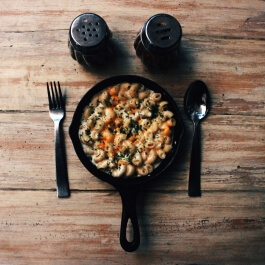
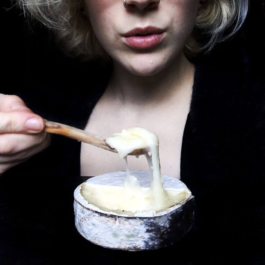
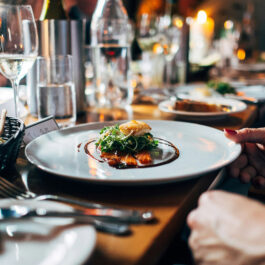

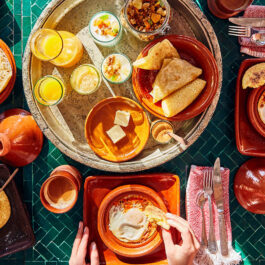



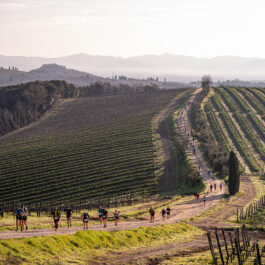
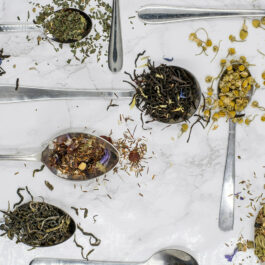

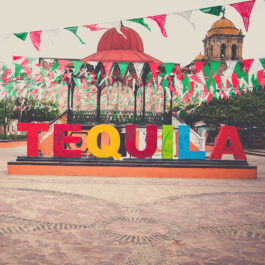

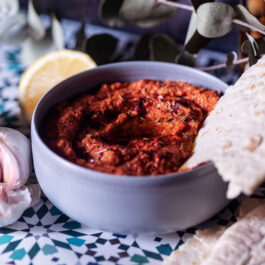
Sorry, the comment form is closed at this time.